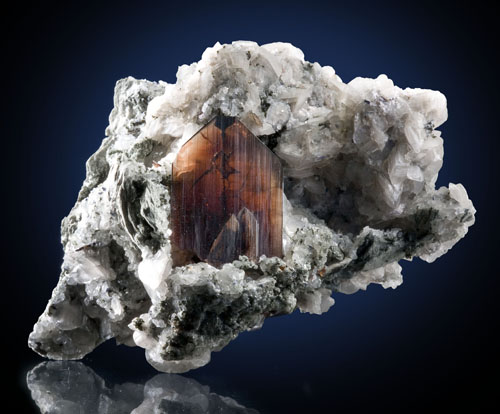The Mineral brookite

Brookite is one of the three main forms of titanium dioxide. It forms distinct and unique crystals, and is often associated with the two other minerals it is polymorphous with, Rutile and Anatase. Brookite almost always forms together with Quartz, and is occasionally entirely included within a Quartz crystal.
Brookite is named in honor of Henry J. Brooke (1771-1857), an English mineralogist who specialized in crystallography and discovered several new mineral species.
Color
Reddish-brown, brown, yellow-brown, yellow-orange, greenish-gray, black. Often has lighter and darker color zones, or a black zone running through the center of a crystal.
Crystal System
Orthorhombic
Varieties
-
Brookite from Magnet Cove, Arkansas, with a characteristic color and shape.
Uses
Brookite is a rare collectors mineral and is desired by collectors, especially good crystals.
Noteworthy Localities
A classic British locality is Twll Maen Grisial, Prenteg, Wales, the type locality for Brookite that was once well-known for producing large Brookite crystals. Other European localities include Le Trient, Wallis, Switzerland; the Reuss Valley, Uri, Switzerland; and Mt. Bregaceto, Borzonasca, Italy.
Exceptionally large and beautifully colored Brookite crystals come from Balochistan, Pakistan, at Taftan, Dalbandin, and Kharan. In Russia, well-formed crystals come from Siberia at the Dodo and Puiva Mine, both in Saranpaul. Large crude crystals have been found at Fitampito, Iralamavory, Madagascar.
In the U.S., the only significant Brookite locality is Magnet Cove, Hot Springs Co., Arkansas, which is famous for its large black and often lustrous crystals.
Distingushing Similar Minerals
Topaz - Harder, not usually in flattened crystals.